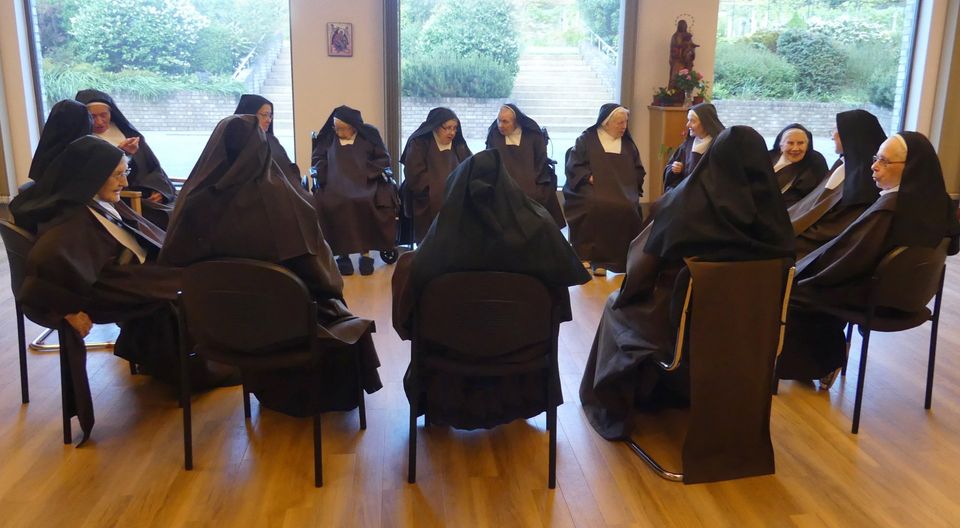Our Sisters
“True to the ideal of their Holy Mother, the Discalced Carmelite nuns live their contemplative life in an atmosphere that integrates, on the one hand, solitude and silence, with a sisterly
community life on the other.”
Constitutions 11
"By this love you have for one another, everyone will know that you are my disciples."
John 13: 35
"By this love you have for one another, everyone will know that you are my disciples."
John 13: 35
The importance of recreation
The Reform of Carmel founded by Teresa in 1562 was truly innovative in the way it integrated the solitary and community life. Teresa opened 15 convents of the Carmelite Reform which consisted of small groups of nuns who prayed together, worked in solitude and enjoyed daily recreation. She combined hermit and community lifestyles, a unique feature of the Teresian Carmel.
St Teresa structured the community’s day to contain times of solitary, silent prayer and spiritual reading alongside times of prayer in common: daily Mass and the Liturgy of the Hours. Similarly, work was to be done alone wherever possible. This was complemented by daily recreation which was a time of friendly, relaxed sharing. St Teresa attached great significance to this shared recreation because of the importance of this community-building time. So much so that St Teresa judged a novice’s progress in prayer by her behaviour at recreation rather than feelings of holiness. She spoke strongly against exclusive friendships: everybody was to be included.
The importance of recreation
The Reform of Carmel founded by Teresa in 1562 was truly innovative in the way it integrated the solitary and community life. Teresa opened 15 convents of the Carmelite Reform which consisted of small groups of nuns who prayed together, worked in solitude and enjoyed daily recreation. She combined hermit and community lifestyles, a unique feature of the Teresian Carmel.
St Teresa structured the community’s day to contain times of solitary, silent prayer and spiritual reading alongside times of prayer in common. This was complemented by daily recreation which was a time of friendly, relaxed sharing. St Teresa attached great importance to this shared recreation because of the importance of this community-building time. So much so that St Teresa judged a novice’s progress in prayer by her behaviour at recreation rather than feelings of holiness. She spoke strongly against exclusive friendships: everybody was to be included.
The gift of our sisters
Indeed, our sisters are among God’s greatest gifts to us. He calls us to live together in the close proximity of an enclosed community while keeping an essential part of ourselves in solitude with him. We differ in character, age and personality; in gifts of grace and nature and in life experience; yet each sister tries to serve God totally in this new community to which God has brought us. Here bonds of spiritual friendship and sincere love grow making Carmel a beautiful place. Indeed, the Lord has been very good to us.
The gift of our sisters
Indeed, our sisters are among God’s greatest gifts to us. He calls us to live together in the close proximity of an enclosed community while keeping an essential part of ourselves in solitude with him. We differ in character, age and personality; in gifts of grace and nature and in life experience; yet each sister tries to serve God totally in this new community to which God has brought us. Here bonds of spiritual friendship and sincere love grow making Carmel a beautiful place. Indeed, the Lord has been very good to us.
"The sisters should keep in mind that they were called by the Lord to the same community in order to live their vocation together. They will make every effort to grow in unity, for that is God's gift to them and their task. This means that they must strive daily to persevere in esteeming and cherishing one another, in showing practical love for their community and in their efforts to renew its vitality in the Church."
Constitutions 104


